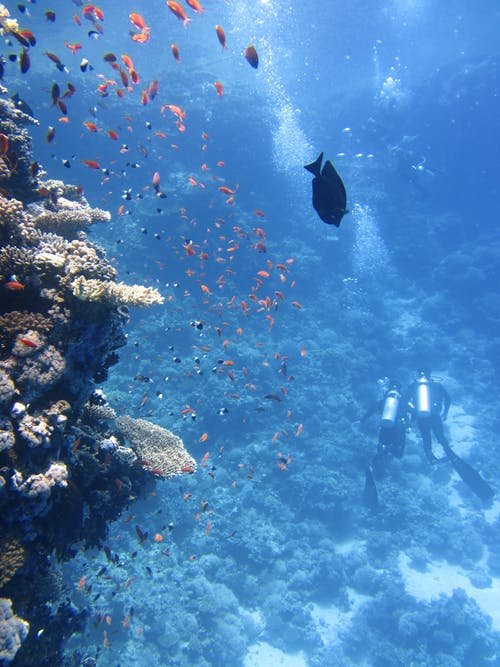There are More Fish in the Sea
With so many conflicting reports about seafood's benefits and harms to people and the environment, navigating a sushi menu is now as treacherous as sailing the open seas. You know that Omega-3 fatty acids are good for your heart, skin, and joint health BUT what about mercury levels AND the risk of overfishing?
Suddenly, ordering a pizza seems like a much better idea.
Never you fear. A basic understanding of commercial fishing methods can help you make healthy, sustainable choices when consuming seafood and get all of the benefits of fish with a lowered risk of harm to yourself and the environment.
The first factor to consider is the type of fish you are consuming. Overfishing is a big problem, and native stocks must remain at sufficient levels to supply fisheries. According to the Seafood Choices Alliance, an international conservation program, more than 75 percent of global fish populations are overexploited. Opt for species that grow quickly and breed young, such as sardines and anchovies (which also have high levels of Omega-3s and low mercury levels) over slow-growing fish that have late reproduction cycles like orange roughy.
Next, consider how the fish was obtained. Many commercial fishing methods harm the surrounding environment by damaging the sea floor and/or accidentally trapping other species. Such harmful techniques include dredging, gillnetting, trawling, purse seining, and longlining, all of which are some version of dragging a net behind a boat, catching whatever gets sucked into the wake. More sustainable methods of fishing are harpooning and trolling, both of which target the desired catch and allow for the release of unwanted fish. Traps and pots placed at the bottom of the sea floor to catch shellfish can occasionally trap other marine animals, but are generally a sustainable option.
Chances are, the fish you'll find in a restaurant or fish market will have come from a fish farm, according to Seafood Watch, a sustainability program affiliated with the Monterey Bay Aquarium in California, which estimates that approximately half of the fish we consume is farmed. Although fish farming seems like an answer to the problem of overfishing, crowding fish into pens along coastal waters allows feces and diseases to pollute populations of nearby wild fish. Farmed fish are also treated with antibiotics that can leak to surrounding waters and cause drug-resistant diseases to develop.
As experts in the field search for more sustainable practices, such as inland farming, which does a better job of isolating farmed populations from wild fish, there are tools you can use to make more informed choices about the seafood you eat. Look for certifaction labels on purchased seafood from the Marine Stewardship Council (msc.org) of which indicate sustainability. Other great resource is the downloadable Pocket Seafood Selector from the Environmental Defense Fund (EDF) seafood.edf.org, which ranks seafood choices by "best," "okay," and "worst" by both sustainability and health. If you find yourself stymied by the sushi menu while out with friends, just text FISH and the species name to 30644 for instant information on its environmental assessment and some better alternatives.
So if you still want to order that pizza, get me a slice with anchovies.

Thanks for using eSteem!
Your post has been voted as a part of eSteem encouragement program. Keep up the good work! Install Android, iOS Mobile app or Windows, Mac, Linux Surfer app, if you haven't already!
Learn more: https://esteem.app
Join our discord: https://discord.gg/8eHupPq